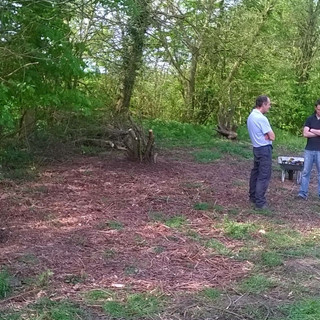Homes for Mini Beasts
- binfieldeg
- Apr 21, 2018
- 2 min read
This Saturday morning, on the cool shady side of the Balancing Pond at Wicks Green, volunteers constructed three stag beetle log pyramids, and one log pile. There was even time for a little light litter picking.
The stag beetle is a globally threatened species, protected under the Wildlife and Countryside Act 1981, and listed as a priority species for conservation in the UK and Local Biodiversity Action Plans. Destruction of its key habitat – dead wood – through the ‘tidying-up’ of woodlands and parks has been the prime reason for its decline, although in urban areas the impacts of traffic, trampling, cats and other predators will also be significant.
One way to help stag beetles is to provide a home for them. The major problem facing stag beetles is the lack of rotting wood to lay their eggs near and for their young larvae to feed on. Don’t worry – stag beetles are harmless and will not damage living trees, plants, furniture or buildings.
Stag beetles don’t move far from where they emerge. Although males can fly up to 500m, most female stag beetles don’t travel more than 20m and return to where they emerged to lay eggs. This means populations are vulnerable to becoming isolated and if there isn’t enough dead wood nearby, dying out altogether.
They rely on decaying wood that is in contact with the soil, both to feed on as larvae and in which to lay their eggs.
► Log pyramids can be built at any time of year
► Use wood from any broadleaved tree
► The logs should be at least the thickness of an adults arm
► Site the logs in partial shade if possible to prevent them drying out
► Partially bury the logs in the soil so that they don’t dry out
► Allow plants to grow over the log pyramid to retain moisture and provide shade
These log piles will also benefit a range of other species including fungi, dead wood invertebrates and the animals that feed on them. It will be a great place for foraging small mammals, basking reptiles and potentially solitary bees.















Comments